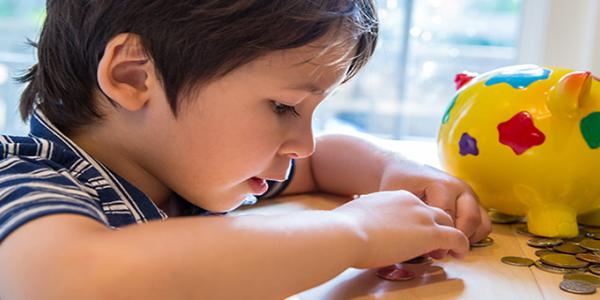Support Math with Materials in Your Home

You are here
By: Carrie Cutler
Recent research shows that children who are ready to learn math are likely to do better in school. Here are six activities that support your child's math readiness - with simple materials you may have at home.
1. Shoelace Shapes: Supports learning about geometry and exploring shapes. Children learn words used in math and begin to notice the features of different shapes as they outline the shapes with string.
Materials: Paper & markers, 20-inch shoelace or string
Instructions: Draw a large shape on a sheet of paper. It can be a geometric shape such as a triangle or oval or an irregular shape like a squiggly circle. Demonstrate for your child how to place the lace or string along the shape's outline. Then, encourage your child to do the same. Talk about curvy and straight lines. Draw a new shape and invite your child to do the activity again. Discuss how the shapes are similar and how they are different.
2. Circles and Cans: Supports learning about geometry and matching similar shapes.
Materials: Paper & markers, food cans of different sizes
Instructions: Take out a few cans of food of different sizes from the cupboard. Talk about the shape of the whole can (they are cylinders) and the shape of the top and bottom of the cans (circles). Together with your child, trace each can on a piece of paper. Shuffle the papers and help your child match the cans to the traced circles.
3. Snowball Hunt: Supports counting. Learning to count in order (1, 2, 3, and so on) is a basic math skill.
Materials: 12 cotton balls, 1 egg carton
Instructions: Number the cups of the egg carton from 1 to 12. Hide cotton ball “snowballs” around the room. Give your child the empty numbered egg carton. Ask your child to looks for the hidden “snowballs” and fill the egg carton cups in order from 1 to 12. Then let your child hide the snowballs for you to find.
4. Muffin Tin Counting: Supports learning to: count, make sets, and use one-to-one correspondence. To find the total number of items in a set, your child must recognize that the last number in the counting sequence tells “how many.” This is called cardinality.
Materials: Muffin pan, paper liners, and some small objects like buttons, pebbles, or acorns
Instructions: With your child, number the paper liners from 1 to 12. Place each liner in a muffin cup while counting out loud, “1, 2, 3 . . . 12”). Ask your child to place in the cup as many buttons as needed to match the number of the cup.
5. Nesting Instinct: Supports learning about measurement and putting items in order by size seriation. When children order objects by size, they build their comparison skills and use math words such as larger and smaller.
Materials: Empty food boxes such as cereal, macaroni, or rice
Instructions: Have your child experiment to find out which boxes fit inside one another. Model and encourage the use of correct measurement vocabulary such as longer, shorter, wide, narrow, taller, and shorter. Ask questions like: Can that one (pointing to the smaller one) fit inside that one (pointing to the bigger one)? How do you know?
6. Shoe Comparisons: Supports learning about measurement and comparing the lengths of items. Comparing how long things are helps prepare children understand why we use standard units of measurement.
Materials: Child’s shoe
Instructions: Have your child use the shoe as a measurement tool. Say, “Can you find four things in the room that are shorter than your shoe?” Use math vocabulary such as measure, compare, length, shorter, and longer to discuss the objects your child finds. Next, ask your child to find four objects that are longer than the shoe.
These activities encourage children to build strong foundations in early childhood mathematics. With a little creativity, simple household items can become powerful tools for learning math. Open your kitchen cupboards and open your child’s mind to thinking and learning about math!
About the Author: Though she enjoys teaching and learning in formal settings, Dr. Carrie Cutler’s best insights come from her own seven children, ages two months to 16 years.